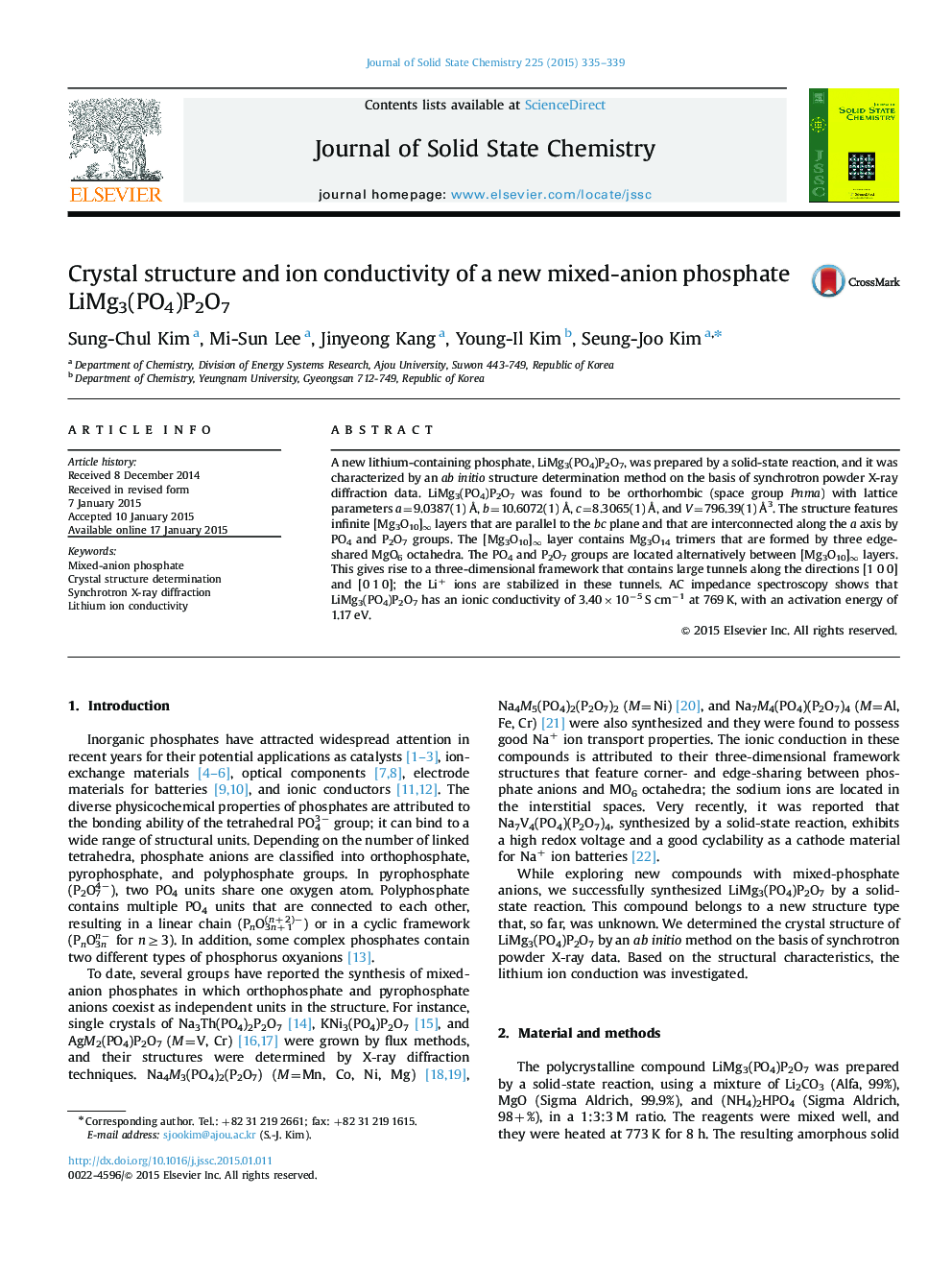| Article ID | Journal | Published Year | Pages | File Type |
|---|---|---|---|---|
| 1331638 | Journal of Solid State Chemistry | 2015 | 5 Pages |
•New compound LiMg3(PO4)P2O7 is reported.•The crystal structure is investigated by synchrotron XRD analysis.•The structure features [Mg3O10]∞ layers with interconnecting PO4 and P2O7 groups.•Correlation between the crystal structure and ionic conductivity is discussed.
A new lithium-containing phosphate, LiMg3(PO4)P2O7, was prepared by a solid-state reaction, and it was characterized by an ab initio structure determination method on the basis of synchrotron powder X-ray diffraction data. LiMg3(PO4)P2O7 was found to be orthorhombic (space group Pnma) with lattice parameters a=9.0387(1) Å, b=10.6072(1) Å, c=8.3065(1) Å, and V=796.39(1) Å3. The structure features infinite [Mg3O10]∞ layers that are parallel to the bc plane and that are interconnected along the a axis by PO4 and P2O7 groups. The [Mg3O10]∞ layer contains Mg3O14 trimers that are formed by three edge-shared MgO6 octahedra. The PO4 and P2O7 groups are located alternatively between [Mg3O10]∞ layers. This gives rise to a three-dimensional framework that contains large tunnels along the directions [1 0 0] and [0 1 0]; the Li+ ions are stabilized in these tunnels. AC impedance spectroscopy shows that LiMg3(PO4)P2O7 has an ionic conductivity of 3.40×10−5 S cm−1 at 769 K, with an activation energy of 1.17 eV.
Graphical abstractPolyhedral view of LiMg3(PO4)P2O7. Li+ ions are represented by orange spheres, MgO6 groups by octahedra, and PO4 groups by tetrahedra.Figure optionsDownload full-size imageDownload as PowerPoint slide
